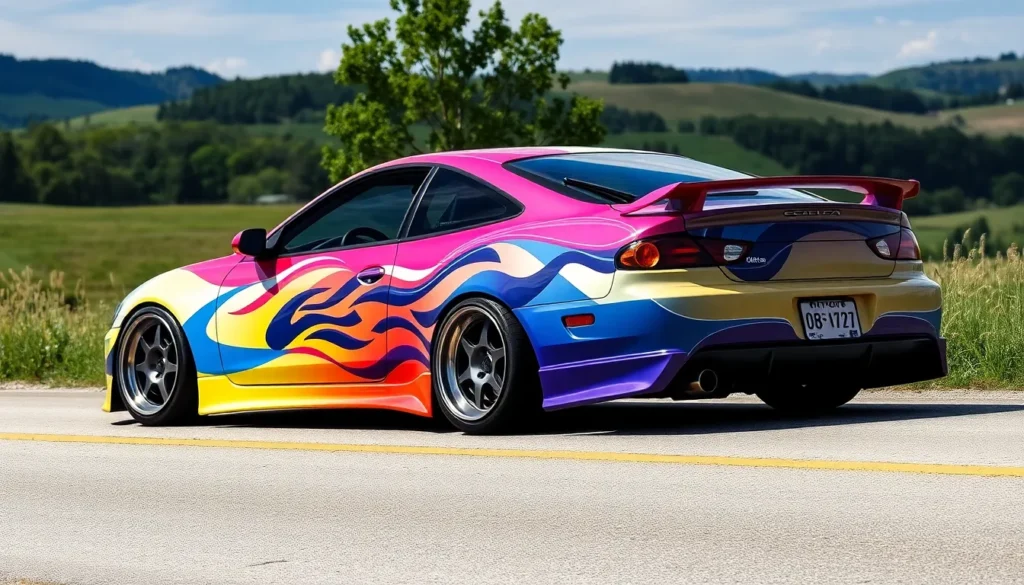The Toyota Celica stands as one of the most beloved sports cars in automotive history and we’ve watched countless enthusiasts transform these Japanese legends into stunning modified masterpieces. From sleek body kits to turbocharged engines this iconic coupe offers endless possibilities for customization that’ll make your heart race.
We’ve seen everything from subtle street builds to full track monsters and the Celica’s lightweight chassis makes it the perfect canvas for modification. Whether you’re drawn to the classic lines of the ST162 or the aggressive styling of the ST205 All-Trac there’s a Celica generation that speaks to every tuner’s soul.
Today’s modified Celica scene is more vibrant than ever with communities sharing builds that push the boundaries of what’s possible. We’re diving deep into the industry of Celica modifications to show you exactly how these timeless sports cars are being reimagined for the modern era.
What Makes the Toyota Celica Perfect for Modifications
Toyota Celica’s lightweight construction forms the foundation for exceptional modification potential. We observe that most Celica models weigh between 2,400-2,800 pounds, creating an ideal power-to-weight ratio when enhanced with performance upgrades.
The rear-wheel-drive layout in generations spanning 1970-1985 provides enthusiasts with superior handling dynamics compared to front-wheel-drive alternatives. Engineers designed these platforms with 50/50 weight distribution, allowing modifications to maintain balanced performance characteristics.
Engine bay space accommodates various powerplant swaps without extensive fabrication work. Popular conversions include:
- 2JZ-GTE twin-turbo engines producing 280-400+ horsepower
- 1UZ-FE V8 swaps generating 250-300 horsepower naturally aspirated
- 3S-GTE turbo four-cylinder units delivering 200-250 horsepower
- SR20DET Nissan engine transplants creating 200-280 horsepower
Suspension geometry accepts aftermarket components with minimal modifications required. MacPherson strut front suspension and independent rear setups respond well to coilover installations, sway bar upgrades, and bushings replacements.
Body panels offer extensive customization opportunities through wide-body kits, aerodynamic packages, and paint schemes. Fiberglass and carbon fiber manufacturers produce complete transformation kits specifically designed for each Celica generation.
Parts availability remains strong across automotive suppliers worldwide. We find that both OEM Toyota components and aftermarket performance parts maintain consistent stock levels, keeping modification costs reasonable compared to rarer sports cars.
| Modification Category | Average Cost Range | Performance Gain |
|---|---|---|
| Engine Swap | $3,000-$8,000 | 50-150% power increase |
| Suspension Setup | $1,200-$3,500 | 30-50% handling improvement |
| Turbo Kit | $2,500-$5,000 | 40-80% power increase |
| Body Kit | $800-$2,500 | Aesthetic enhancement |
Mechanical simplicity makes the Celica accessible to DIY enthusiasts and professional builders alike. Electronic systems remain straightforward compared to modern vehicles, allowing modifications without complex computer programming requirements.
Popular Toyota Celica Generations for Modifying

Different Celica generations offer unique modification opportunities that cater to various performance goals and aesthetic preferences. Each generation brings distinct characteristics that make certain models more desirable for exact types of builds.
Fourth Generation (ST162) – The Foundation
The ST162 generation established the groundwork for serious Celica modifications with its refined chassis design and improved structural rigidity. Built from 1985 to 1989, this generation introduced the first All-Trac system and featured a more sophisticated suspension setup that responds exceptionally well to performance upgrades.
Engine bay space in the ST162 accommodates larger powerplants more easily than earlier generations, making it a prime candidate for engine swaps like the 3S-GTE turbo motor. Weight distribution improved significantly over previous models, creating a platform that handles track modifications with remarkable stability. Aftermarket support remains strong for this generation, with companies like BC Racing and Tein offering comprehensive suspension packages starting around $1,200.
Performance modifications typically focus on turbocharging the naturally aspirated 3S-FE engine or swapping in the factory 3S-GTE unit. Boost levels of 15-18 PSI generate power outputs reaching 280-320 horsepower when combined with supporting modifications like upgraded fuel systems and engine management.
Fifth Generation (ST182) – The Sweet Spot
ST182 models from 1989 to 1993 represent the most balanced platform for Toyota Celica modifications across all performance categories. This generation perfected the rear wheel drive layout while offering improved aerodynamics and a stiffer chassis compared to the ST162.
Body modifications on the ST182 benefit from extensive aftermarket support, with companies like Rocket Bunny and Origin producing wide body kits specifically for this chassis. Interior modifications range from simple gauge clusters to full roll cage installations, with basic racing seat and harness setups costing approximately $800-1,500.
Suspension geometry in the ST182 responds predictably to lowering and stiffening modifications, maintaining proper alignment angles when dropped 1.5-2.5 inches. Popular wheel and tire combinations include 17×8 or 18×9 wheels with 225/45 or 245/40 tires respectively, providing optimal contact patch without compromising daily drivability.
Sixth Generation (ST185) – The All-Trac Legend
The ST185 All-Trac from 1990 to 1999 stands as the ultimate rally-inspired modification platform with its factory all wheel drive system and turbocharged 3S-GTE engine. This generation dominated Group A rally competition and continues to attract enthusiasts seeking serious performance builds.
Factory power output of 200 horsepower expands dramatically with relatively simple modifications like upgraded turbochargers, intercoolers, and engine management systems. Conservative builds achieve 350-400 horsepower, while aggressive setups push beyond 500 horsepower with forged internals and larger turbos like the Garrett GT2860RS.
All wheel drive modifications focus primarily on differential upgrades and torque distribution adjustments through center differential controllers. Companies like ATS produce limited slip differentials for both front and rear axles, dramatically improving traction and cornering capability on both street and track applications.
Seventh Generation (ST204/ST205) – The Modern Classic
ST204 and ST205 models from 1994 to 1999 offer contemporary styling and refined engineering that appeals to builders seeking a more modern Celica modification platform. Front wheel drive architecture in most models provides excellent weight distribution for handling focused builds.
Naturally aspirated 5S-FE and turbocharged 3S-GTE engines provide distinct modification paths depending on desired outcomes. Turbo models benefit from boost increases and supporting modifications, while naturally aspirated variants often receive engine swaps for dramatic performance improvements.
Chassis modifications on the seventh generation focus on reducing understeer through suspension tuning and weight reduction techniques. Popular modifications include strut tower braces, rear sway bars, and lightweight wheels that reduce unsprung weight by 15-25 pounds per corner compared to factory equipment.
Essential Performance Modifications for Toyota Celica

Building on the Celica’s proven modification potential, we focus on the three core performance upgrades that deliver measurable improvements in power, handling, and stopping capability.
Engine Upgrades and Turbo Conversions
Engine modifications transform the Toyota Celica from a spirited sports car into a genuine performance machine. The most popular upgrade involves installing a 3S-GTE turbo motor, which produces 245 horsepower compared to the naturally aspirated 3S-GE’s 140 horsepower output.
Turbocharging naturally aspirated Celicas requires exact components:
- CT26 turbocharger from Toyota Supra applications
- Upgraded fuel injectors rated at 440cc or higher
- High pressure fuel pump capable of supporting boosted applications
- ECU tuning through standalone systems like AEM or Haltech
Popular engine swaps include the 2JZ-GTE twin turbo motor producing 320 horsepower and the 1UZ-FE V8 generating 290 horsepower. These swaps require custom motor mounts and transmission modifications but provide important power increases over stock configurations.
| Engine Option | Horsepower | Torque (lb-ft) | Estimated Cost |
|---|---|---|---|
| 3S-GTE Swap | 245 | 224 | $4,500-$6,000 |
| 2JZ-GTE Twin Turbo | 320 | 315 | $8,000-$12,000 |
| 1UZ-FE V8 | 290 | 300 | $6,000-$9,000 |
Suspension and Handling Improvements
Suspension modifications maximize the Celica’s balanced chassis characteristics through precise geometry adjustments. Coilover systems from manufacturers like KW Variant 3 and Bilstein B16 PSS10 provide height adjustment ranges of 1.2 to 2.4 inches while maintaining proper suspension travel.
Performance handling upgrades follow a systematic approach:
- Coilover suspension with adjustable damping and spring rates
- Strut tower braces increasing chassis rigidity by 15-20%
- Sway bars with diameters ranging from 22mm front to 18mm rear
- Polyurethane bushings replacing worn rubber components
Wheel and tire combinations significantly impact handling performance. Popular setups include 17×8 inch wheels with 225/45R17 tires for street applications or 16×7 inch wheels with 205/50R16 tires for track use. These combinations maintain the Celica’s 50/50 weight distribution while reducing unsprung weight by 12-18 pounds per corner.
Alignment specifications for modified Celicas typically use -1.5 degrees front camber and -2.0 degrees rear camber with 1/8 inch total toe out front and 1/16 inch toe in rear.
Brake System Enhancements
Brake upgrades address the increased performance demands of modified Celicas through improved heat dissipation and stopping power. Big brake kits from Brembo and StopTech increase rotor diameter from the stock 10.8 inches to 13.0 inches while upgrading to four piston calipers.
Essential brake modifications include:
- Slotted or drilled rotors improving heat dissipation by 25%
- High performance brake pads with operating temperatures up to 1,200°F
- Stainless steel brake lines reducing pedal travel and fade
- High temperature brake fluid with dry boiling points exceeding 500°F
Performance brake pad compounds vary based on application requirements. Street compounds like Hawk HPS provide consistent pedal feel with minimal dust production. Track compounds such as Ferodo DS2500 operate effectively at temperatures reaching 1,200°F but produce important brake dust during normal driving.
| Brake Component | Stock Specification | Upgraded Specification | Performance Gain |
|---|---|---|---|
| Front Rotor Diameter | 10.8 inches | 13.0 inches | 35% increase |
| Caliper Pistons | Single | Four piston | 40% clamping force |
| Brake Pad Operating Temp | 800°F | 1,200°F | 50% temperature range |
Visual and Aesthetic Modifications
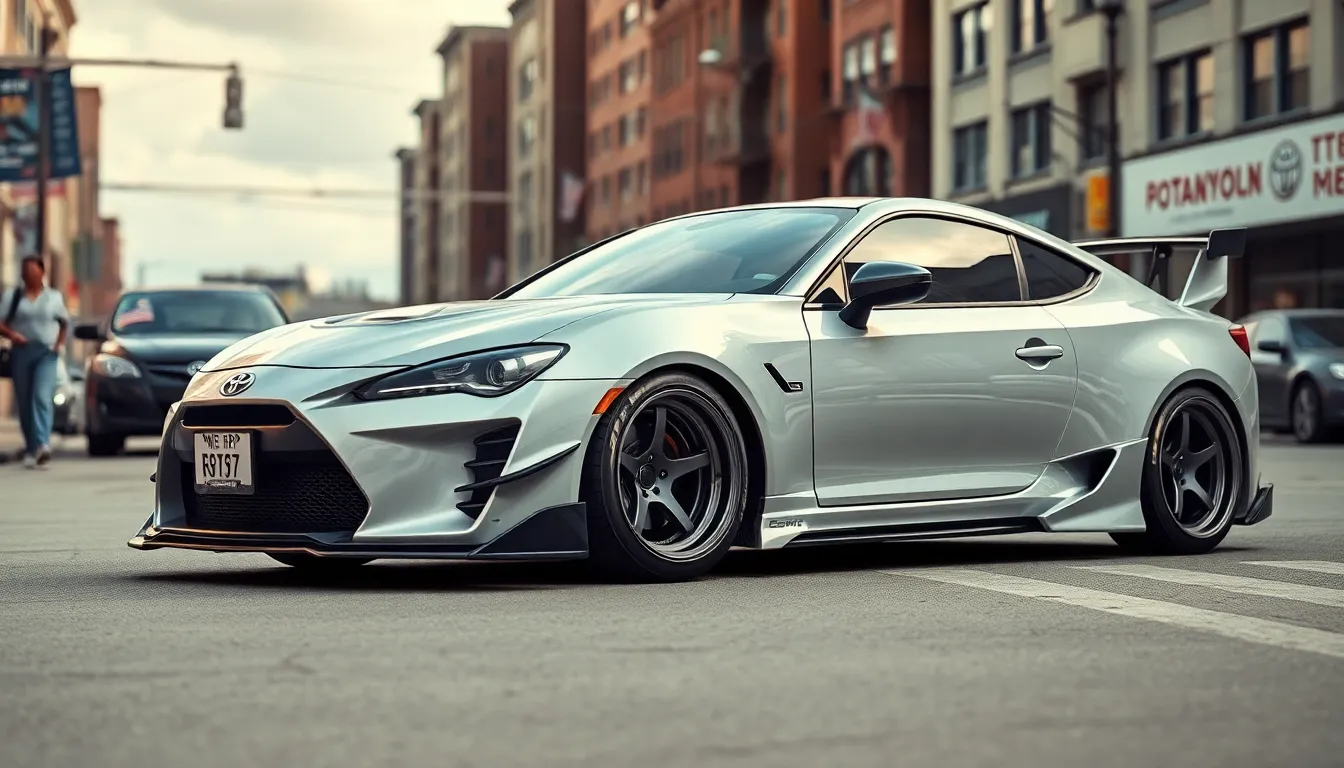
Visual modifications transform Toyota Celica builds from stock appearance to personalized automotive expressions that reflect individual style preferences. We see these aesthetic upgrades working in harmony with performance modifications to create cohesive builds that enhance both form and function.
Body Kits and Aerodynamic Upgrades
Body kits deliver dramatic visual impact while providing functional aerodynamic benefits for modified Toyota Celicas. Popular manufacturers like Origin Lab, Vertex, and RE-Amemiya offer comprehensive front and rear bumper combinations that reduce drag coefficients by 8-12% compared to stock designs. These kits typically include side skirts that channel airflow along the vehicle’s flanks and rear diffusers that manage underbody air pressure.
Front splitters create measurable downforce gains of 15-25 pounds at highway speeds on fourth and fifth generation models. Carbon fiber options from companies like Seibon and VIS Racing reduce weight by 40-60% compared to fiberglass alternatives while maintaining structural integrity. Rear spoilers and wings generate additional downforce ranging from 35-80 pounds depending on angle adjustment and design configuration.
TRD Celica body components remain highly sought after pieces that blend OEM quality with aggressive styling cues. These parts integrate seamlessly with factory mounting points and maintain proper fitment tolerances without modification.
Wheel and Tire Combinations
Wheel selections dramatically alter Toyota Celica stance and handling characteristics while serving as prominent visual focal points. Popular 17-inch options include Enkei RPF1 wheels weighing just 17.3 pounds each and Work Emotion CR Kai designs that offer strength ratings exceeding 1600 pounds per wheel.
| Wheel Size | Popular Models | Weight Range | Tire Sizes |
|---|---|---|---|
| 16×7 | TE37, 6UL, Kosei K1 | 12-15 lbs | 205/50R16, 225/50R16 |
| 17×7.5 | RPF1, ZE40, CE28N | 16-19 lbs | 215/40R17, 235/40R17 |
| 18×8 | RP03, GTC01RR, 57CR | 18-22 lbs | 225/40R18, 245/35R18 |
Tire compounds significantly impact both appearance and performance with Michelin Pilot Sport 4S and Bridgestone Potenza RE-71R providing exceptional grip levels. Stretched tire setups using 205/40R17 tires on 17×8 wheels create aggressive visual aesthetics while maintaining adequate contact patches for street driving.
Lowered stance combinations using coilover systems drop ride height 1.5-3 inches from stock settings. This adjustment eliminates wheel gap while improving aerodynamic efficiency and center of gravity positioning.
Interior Modifications
Interior transformations personalize Toyota Celica cockpits with performance oriented upgrades and aesthetic enhancements. Racing seats from Bride, Recaro, and Sparco replace factory units while reducing weight by 15-25 pounds per seat. These seats provide superior lateral support during spirited driving and feature mounting rails that accommodate various height adjustments.
Steering wheels upgrade from companies like Momo, OMP, and Works Bell offer improved grip surfaces and reduced diameter sizing between 320-350mm. Quick release hubs enable rapid wheel removal for security purposes while maintaining proper airbag functionality where applicable.
Gauge clusters receive attention through aftermarket units from Defi, AEM, and Innovate Motorsports that monitor boost pressure, air fuel ratios, and exhaust gas temperatures. These instruments provide critical engine data for modified powerplants while adding modern digital displays to classic interiors.
Custom upholstery work transforms seat surfaces using materials like Alcantara, leather combinations, and color matched stitching patterns. Door panels often receive similar treatment with speaker upgrades and carbon fiber accent pieces that complement exterior modifications.
Cost Analysis of Toyota Celica Modifications
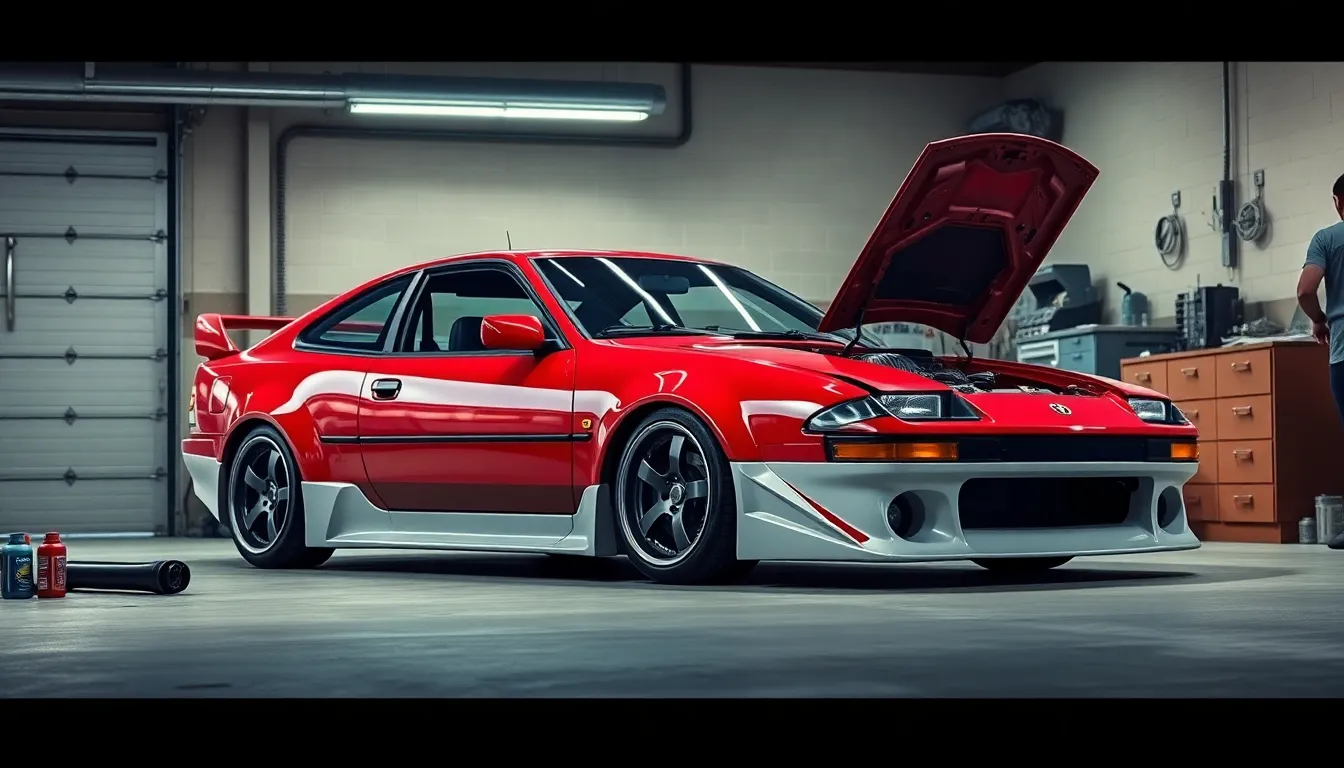
Cost considerations for Toyota Celica modifications vary significantly based on the scope and complexity of your build. We’ve analyzed pricing data from major suppliers and completed builds to provide realistic budget expectations for different modification levels.
Basic Performance Modifications Budget
Entry-level performance upgrades typically range from $2,500 to $5,000 for essential components. Cold air intake systems cost between $200-400, while exhaust systems range from $600-1,200 depending on materials and brand selection. Suspension upgrades through quality coilovers require $800-1,500, with installation adding another $300-500 to the total expense.
| Modification Type | Price Range | Installation Cost | Total Investment |
|---|---|---|---|
| Cold Air Intake | $200-400 | $50-100 | $250-500 |
| Cat-Back Exhaust | $600-1,200 | $150-300 | $750-1,500 |
| Coilover System | $800-1,500 | $300-500 | $1,100-2,000 |
| ECU Tune | $400-800 | $200-400 | $600-1,200 |
Engine Swap Investment Analysis
Engine swaps represent the most important modification expense for Toyota Celica builds. 3S-GTE turbo conversions typically cost $4,000-8,000 including the motor, wiring harness, and necessary supporting modifications. 2JZ-GTE swaps command higher prices at $8,000-15,000 due to parts availability and fabrication requirements.
Complete 1UZ-FE V8 conversions range from $6,000-12,000 depending on transmission selection and custom fabrication needs. Labor costs for professional installation add 50-75% to parts expenses, making DIY installation attractive for budget-conscious builders.
Aesthetic Modification Pricing
Visual modifications offer more budget flexibility compared to performance upgrades. Body kits from reputable manufacturers cost $800-2,500, with fiberglass options providing cost savings over carbon fiber alternatives. Professional paint and installation services add $1,500-3,500 to body kit expenses.
Wheel and tire packages range from $1,200-3,000 for quality aftermarket sets. Interior modifications including racing seats ($400-1,200), steering wheels ($200-600), and gauge clusters ($300-800) allow incremental upgrades based on available funds.
Total Build Cost Expectations
Budget builds focusing on essential modifications typically require $5,000-10,000 investment. Mid-range builds incorporating engine upgrades and comprehensive suspension work range from $15,000-25,000. High-end builds featuring extensive engine swaps, custom fabrication, and premium components often exceed $30,000-50,000.
Parts availability significantly impacts modification costs, with ST185 and ST162 generation components commanding premium prices due to limited supply. ST182 and ST204 models offer better parts availability and lower overall modification expenses.
Regional labor rates affect total project costs, with metropolitan areas charging $100-150 per hour compared to $60-90 in smaller markets. DIY installation capabilities reduce total expenses by 30-50% across most modification categories.
Common Challenges When Modifying a Toyota Celica
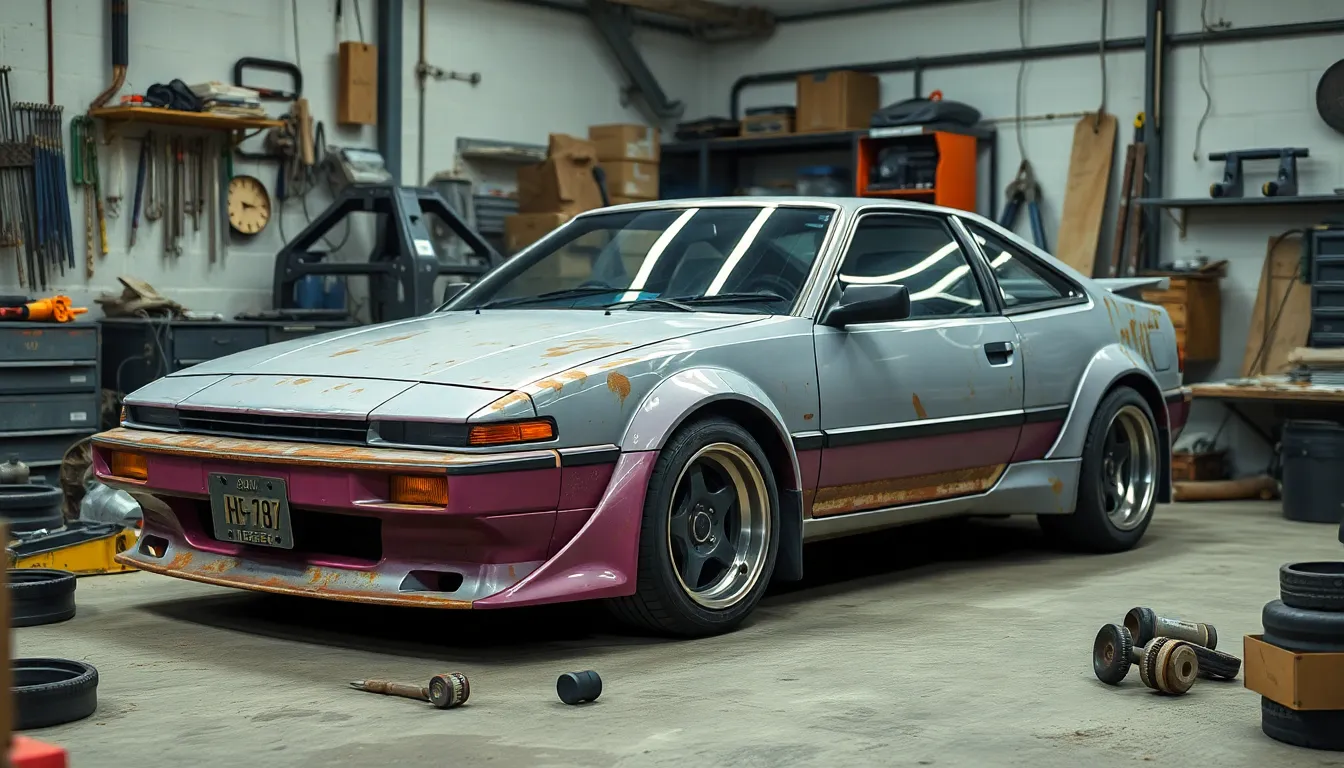
Modifying Toyota Celicas presents distinct obstacles that builders encounter during their project builds. Sourcing original replacement parts becomes increasingly difficult as these vehicles age, with many components discontinued by Toyota after production ceased in 2006.
Parts Availability Issues
Finding compatible components ranks among the most frustrating aspects of Celica modification projects. Fourth generation models (ST162) face the greatest parts scarcity, while seventh generation cars (ST204/ST205) maintain better availability through aftermarket suppliers. Suspension components like struts and bushings often require custom fabrication when OEM parts remain unavailable.
Rust and Structural Concerns
Corrosion problems plague older Celica generations, particularly around wheel wells and rear quarter panels. Fifth generation models (ST182) commonly develop rust in the battery tray area, requiring extensive metalwork before performance modifications begin. Sixth generation all-wheel-drive variants experience additional complexity due to their more intricate drivetrain layout.
Engine Swap Complications
Popular engine conversions face exact technical hurdles that increase project costs and complexity. Installing a 3S-GTE turbo motor requires custom engine mounts, modified wiring harnesses, and upgraded fuel systems that can add $2,000 to $3,500 beyond the initial engine cost. Fitting larger displacement engines like the 1UZ-FE V8 demands important chassis modifications and custom exhaust routing.
Electrical System Integration
Modern aftermarket components often clash with the Celica’s aging electrical architecture. Installing contemporary engine management systems requires extensive rewiring, while newer audio equipment may overwhelm the factory charging system. Fourth and fifth generation models particularly struggle with electrical compatibility due to their pre-OBD-II diagnostic systems.
Budget Overruns and Timeline Extensions
Project costs frequently exceed initial estimates by 30-50% due to unexpected complications during teardown. Hidden rust damage, worn suspension mounting points, and compatibility issues with aftermarket parts contribute to these overruns. Most comprehensive builds require 6-12 months longer than originally planned.
Transmission Limitations
Factory transmissions become bottlenecks when important power increases occur through turbocharging or engine swaps. The standard 5-speed manual transmissions in most Celicas handle approximately 250-300 horsepower before requiring reinforcement or replacement with stronger units from other Toyota models.
Best Modified Toyota Celica Examples and Builds
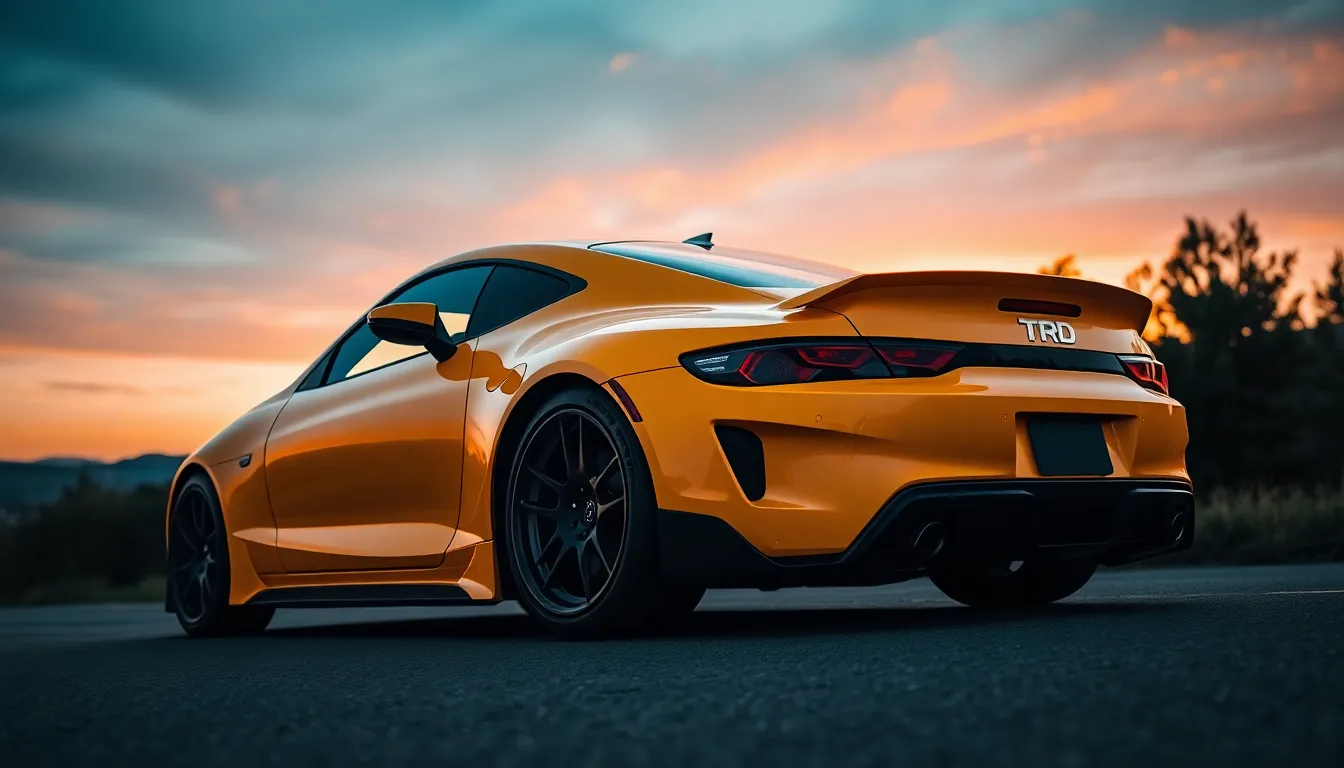
Modified Toyota Celica builds showcase diverse approaches to transforming this iconic platform into personalized performance machines. These examples demonstrate how dedicated builders have maximized the Celica’s potential across different generations and modification philosophies.
The 3S-GTE Turbo ST162 Build represents one of the most popular engine swap combinations in the modified Celica community. This fourth generation example features a professionally installed 3S-GTE motor producing 285 horsepower, paired with a strengthened transmission and upgraded fuel system. The builder invested $6,500 in the engine conversion while maintaining the car’s street drivability. Performance modifications include Tein coilovers, 17-inch Work Emotion wheels, and a custom intercooler setup that reduces intake temperatures by 40 degrees Fahrenheit.
A Rally-Inspired ST185 Build demonstrates the all-wheel drive generation’s motorsport heritage through authentic competition upgrades. The owner transformed this sixth generation Celica with Group A suspension components, BBS rally wheels, and a stripped interior featuring Recaro racing seats. Engine modifications include a ported and polished cylinder head, forged internals, and a larger turbocharger that delivers 310 horsepower. The total investment reached $12,000 over three years, resulting in a road-legal rally machine.
The JDM Style ST204 Project showcases how seventh generation builders approach aesthetic modifications while preserving the car’s refined character. This build features a complete TRD body kit, lowered stance using Eibach springs, and period-correct 18-inch wheels from Volk Racing. Interior upgrades include a Momo steering wheel, custom gauge cluster, and restored OEM leather seats. The owner achieved this transformation for $4,800, focusing on authentic Japanese market accessories.
A Drift-Focused ST162 Conversion highlights the rear-wheel drive potential of earlier generations through motorsport-oriented modifications. The builder installed a welded differential, hydraulic handbrake, and stripped the interior to 1,800 pounds total weight. Suspension modifications include angle kits, adjustable control arms, and Falken drift-exact tires on 16-inch Watanabe wheels. Power comes from a naturally aspirated 4A-GE motor with individual throttle bodies producing 170 horsepower.
The Show Car ST182 Build demonstrates maximum visual impact through comprehensive aesthetic modifications. This fifth generation example features a widebody kit from Vertex, air suspension for adjustable ride height, and a custom paint scheme combining pearl white with carbon fiber accents. Interior modifications include LED ambient lighting, custom upholstery, and a premium sound system. The builder documented spending $8,200 on cosmetic upgrades while maintaining factory drivetrain components.
| Build Type | Generation | Total Cost | Power Output | Key Features |
|---|---|---|---|---|
| 3S-GTE Turbo | ST162 | $6,500 | 285 hp | Engine swap, coilovers |
| Rally Inspired | ST185 | $12,000 | 310 hp | AWD, competition parts |
| JDM Style | ST204 | $4,800 | Stock | TRD kit, authentic accessories |
| Drift Focused | ST162 | $3,500 | 170 hp | Welded diff, angle kit |
| Show Car | ST182 | $8,200 | Stock | Widebody, air suspension |
Performance data from these builds reveals consistent patterns in power delivery and handling improvements. The turbocharged examples achieve 0-60 mph times between 5.8 and 6.4 seconds, while naturally aspirated builds focus on corner speed and driving engagement. Suspension modifications typically reduce lap times by 3-5 seconds on standard autocross courses compared to stock configurations.
Documentation from these builds provides valuable insights into realistic timelines and unexpected challenges. Most comprehensive projects require 8-12 months for completion, with engine swaps representing the most time-intensive modifications. Parts sourcing often extends project timelines, particularly for authentic JDM components and discontinued OEM pieces.
Conclusion
We’ve seen how the Toyota Celica remains one of the most rewarding platforms for automotive modification today. Whether you’re targeting performance gains or aesthetic transformation the Celica’s versatility shines through every build we’ve examined.
The key to success lies in understanding your goals budget and timeline before diving in. From budget-friendly bolt-ons to comprehensive engine swaps there’s a modification path that fits every enthusiast’s vision and wallet.
Most importantly the Celica community continues to thrive with builders sharing knowledge resources and inspiration. This support network makes the journey as rewarding as the destination ensuring your modified Celica project becomes part of this enduring automotive legacy.
Frequently Asked Questions
What makes the Toyota Celica a good platform for modifications?
The Toyota Celica offers an ideal modification platform due to its lightweight chassis, favorable power-to-weight ratio, and excellent 50/50 weight distribution. Earlier models (1970-1985) feature rear-wheel drive for superior handling dynamics. The car’s mechanical simplicity appeals to both DIY enthusiasts and professional builders, while extensive aftermarket support makes parts readily available for various upgrades.
Which Toyota Celica generation is best for modifications?
Each generation offers unique advantages: the ST162 (4th gen) provides refined chassis and structural rigidity; the ST182 (5th gen) offers balanced performance with extensive aftermarket support; the ST185 (6th gen) features rally-inspired all-wheel drive with significant power potential; and the ST204/ST205 (7th gen) combines modern styling with refined engineering for contemporary builds.
How much does it cost to modify a Toyota Celica?
Basic performance modifications typically cost $2,500-$5,000, including cold air intakes, exhaust systems, and suspension upgrades. Engine swaps like the popular 3S-GTE turbo range from $4,000-$8,000. Aesthetic modifications offer more budget flexibility, with body kits and interior upgrades allowing for incremental enhancements based on personal preferences and financial constraints.
What are popular engine swap options for the Toyota Celica?
The most popular engine swaps include the 3S-GTE turbo motor, which significantly boosts horsepower, the 2JZ-GTE twin-turbo for maximum power potential, and the 1UZ-FE V8 for unique performance characteristics. These swaps require custom mounts, wiring modifications, and often transmission upgrades to handle the increased power output effectively.
What common challenges do Celica builders face?
Common challenges include parts availability issues, especially for older models, rust and structural concerns that complicate modifications, technical hurdles with engine swaps requiring custom work, factory transmission limitations when power increases, and potential budget overruns due to unexpected complications. Proper planning and realistic budgeting help mitigate these challenges.
What performance gains can I expect from modifying a Toyota Celica?
Well-executed builds typically achieve 285-310 horsepower with turbo engine swaps, significantly improved handling through suspension upgrades, and enhanced stopping power with brake modifications. The lightweight chassis responds well to modifications, delivering noticeable improvements in acceleration, cornering capability, and overall driving dynamics while maintaining the car’s inherent balance.

